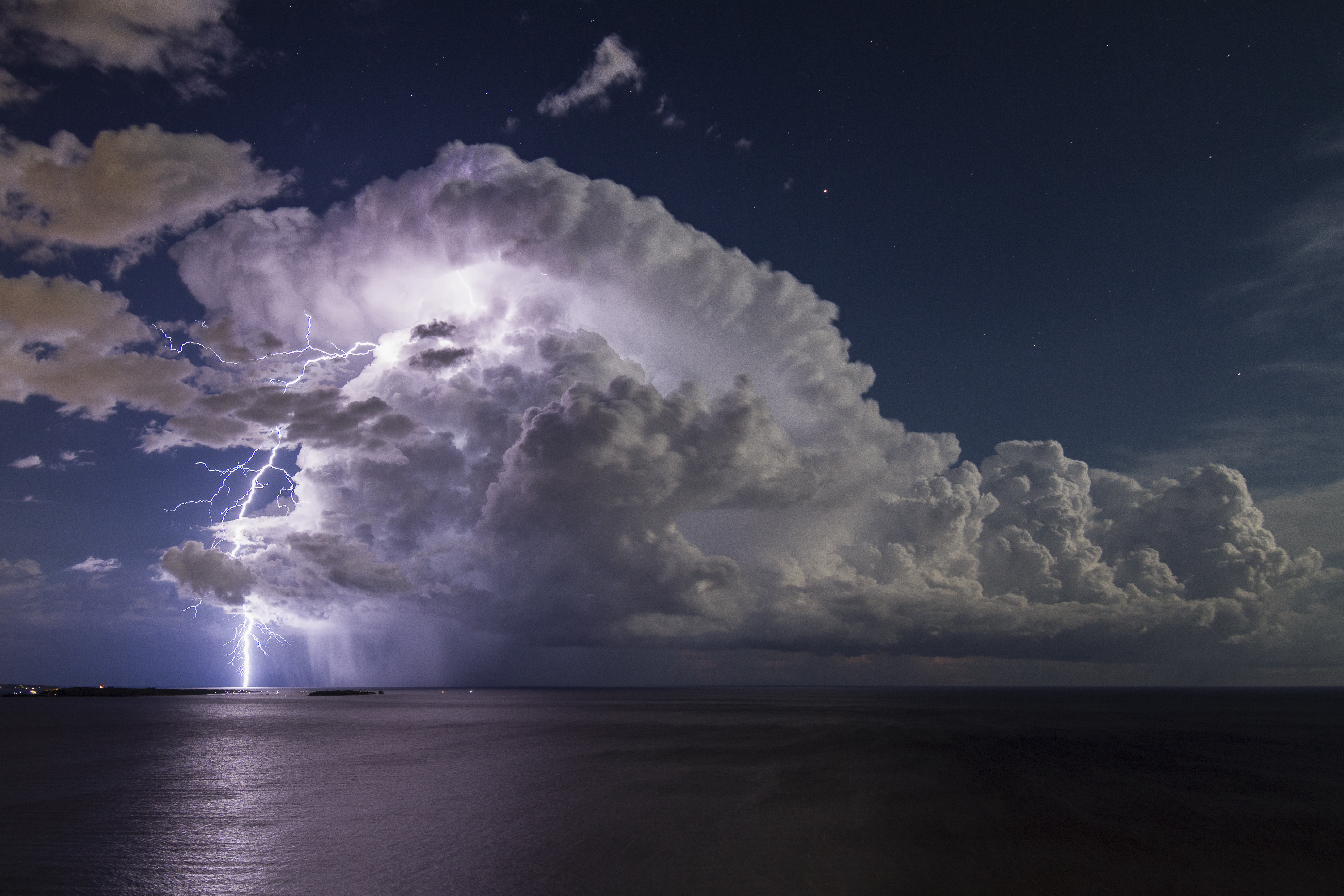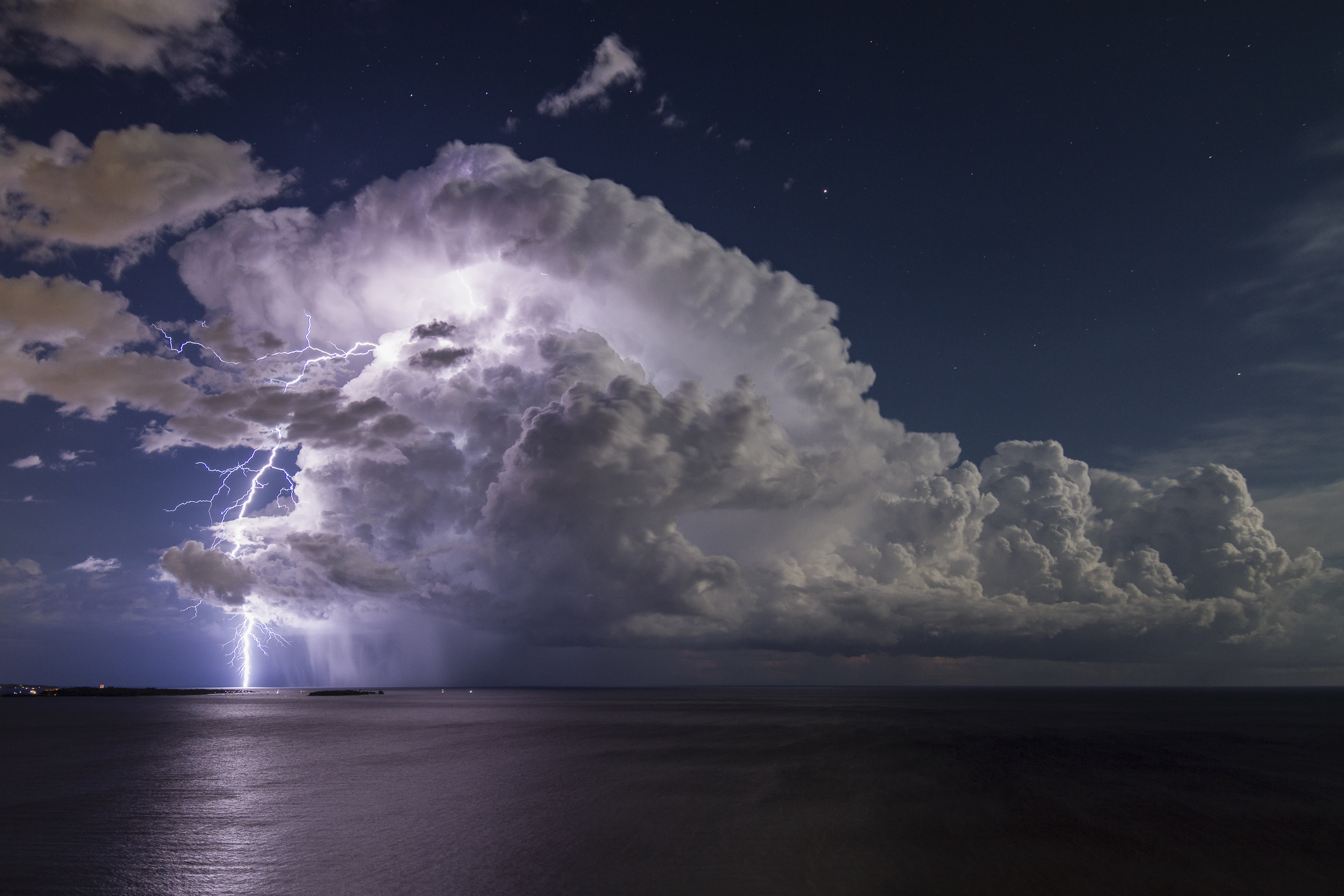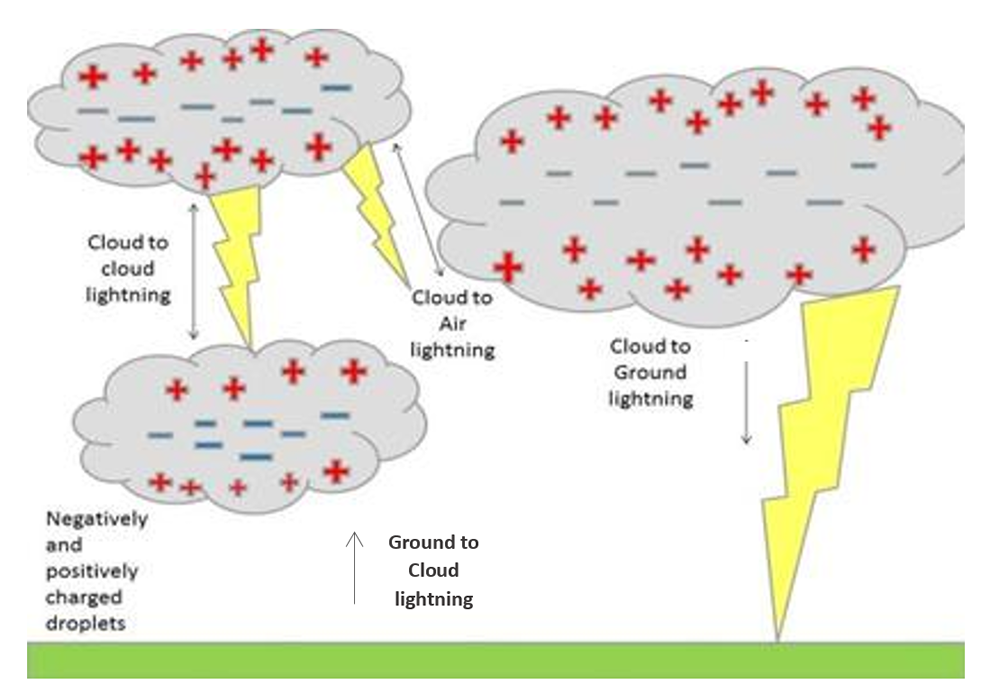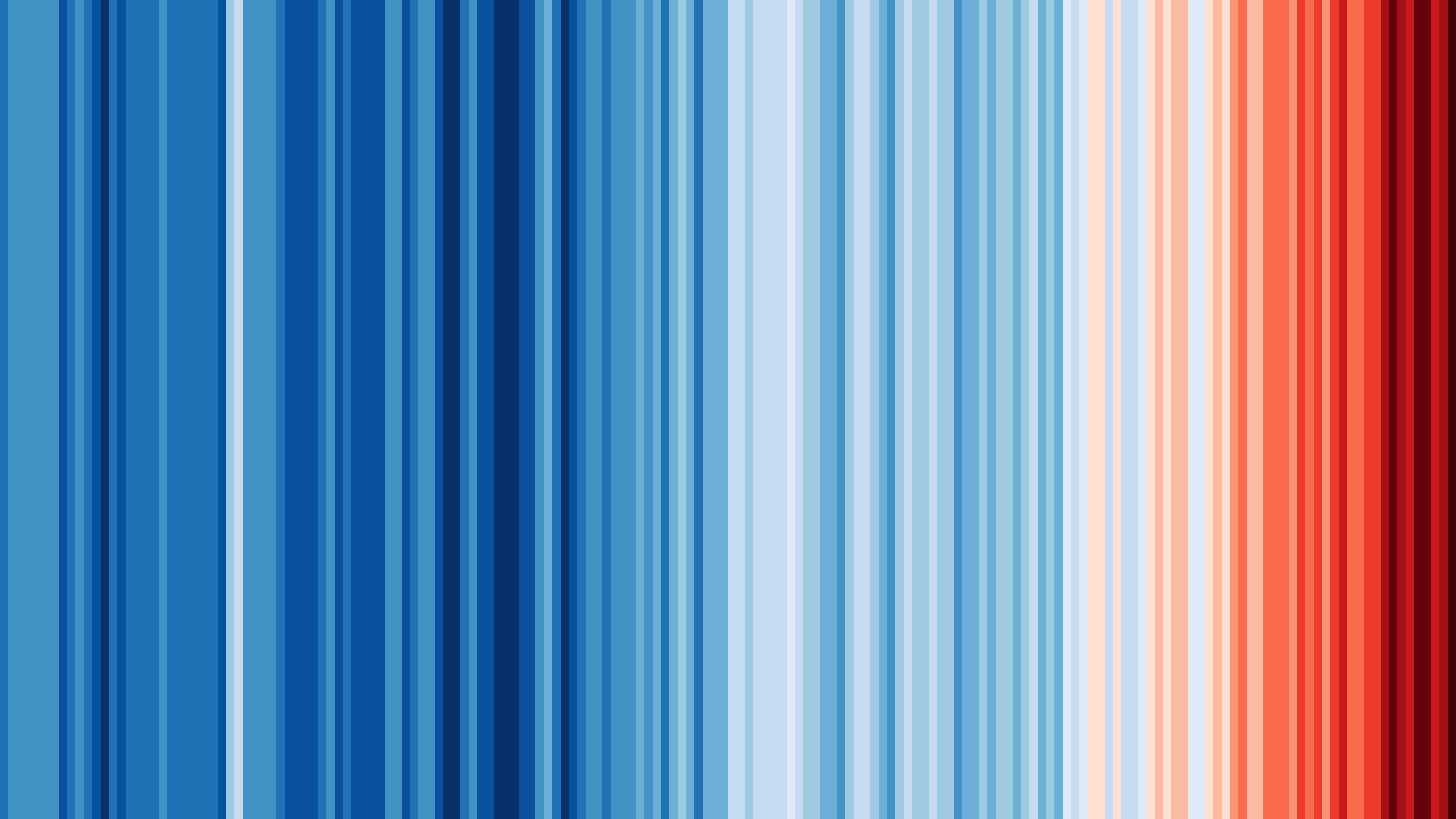

Weather Photographer of the Year 2022: Behind previous winning images – thunderstorms and lightning
Every second on Earth, 100 lightning bolts strike the planet. That’s about 8 million strikes per day, and 3 billion a year, on average.

The public vote winning image of 2021 was ‘Lightning from an Isolated Storm over Cannes Bay’, taken by Serge Zaka in the south of France. This photo was also placed in third place by the judging panel.
Serge captured this thunderstorm on a full-moon night over the famous bay. He says the conditions were ideal, just the calm of the night and the sound of thunder.
Lightning is essentially a giant spark that occurs within a cloud, between clouds or between the cloud and the ground. An electric charge builds up within a cloud thanks to the millions of collisions between ice particles and water droplets.

The positive charges form at the top of the cloud and the negative charges at the bottom. In turn, this causes a positive charge to build up on the ground beneath the cloud, on anything that sticks up such as mountains, people or trees.
When the charge coming up from the ground connects with the charge coming down from the clouds then – flash – we’ve got a lightning strike. But what we see as an instantaneous flash is actually a complex progression of events. First, a usually invisible discharge of electrons races down from the cloud. That triggers a discharge of positively charged electricity from the ground that races upwards to meet the descending charge.
When they connect, the lightning channel is completed and a luminous flash of electricity races up from the ground to the cloud in mere milliseconds, called the return stroke. If the lightning flickers, there has been more than one return stroke with the lightning flash ending when there are no more electrons left in the channel.
The air surrounding the lightning channel briefly reaches temperatures of up to 30,000°C, causing the air to rapidly expand, which we hear as thunder.

Record-breaking megaflashes
A lightning bolt stretching for nearly 500 miles across three states holds the record for the longest lightning flash. According to the World Meteorological Organization, a single bolt on 29 April 2020 stretched for 477.2 miles (768 km) across Texas, Louisiana and Mississippi.
Another lightning megaflash record occurred on 18 June 2020, when a flash lasted for 17.1 seconds over the skies of Uruguay and Argentina.
Both of these record-breaking megaflash events were cloud-to-cloud lightning strikes and a result of incredibly intense thunderstorms. As lightning-detection technology on satellites improves it’s likely these records will be broken again.
Perfect storm
Craig Boehm has been chasing and photographing storms for the last nine years. He describes the supercell in this photo taken in Chamberlain, Saskatchewan, Canada, as matching his mental image of a ‘Perfect Storm’.

A supercell is a powerful thunderstorm with a deep rotating updraught capable of producing tornadoes, large hail, damaging wind gusts and torrential rain.
Supercell thunderstorms often exhibit a striking visual appearance, due to the strong dynamics within the storm. The smooth appearance of some of the lower clouds shows where air which is not buoyant is being ‘sucked’ into the storm by the powerful rotating updraught above. Part of this lifting is also due to colder air rushing out of the storm – the colder air having been created by precipitation falling from the storm.

This approaching storm was a winner for 17-year-old Phoenix Blue, who was awarded The Young Weather Photographer of the Year 2021 for his photo of a ‘Kansas Storm’ in the USA. Phoenix took this photo on an iPhone of the “beautiful clouds coming in right before a storm.”
Flash of inspiration
Did you know there are on average 2000 thunderstorms occurring at any one time? If you capture one on camera, we'd love to see it. Enter the Royal Meteorological Society's 'Weather Photographer of the Year' competition - it's free and open to photographers, professional and amateur, of all ages and abilities.
'Weather Photographer of the Year', in association with AccuWeather, attracted almost 9,000 photos last year, seen by millions of people across the world, and there are some great prizes on offer as well as bragging rights of course!
This year's line-up of judges includes experienced meteorologists, photographers and photo editors, including Serge Zaka, winner of the public vote for his storm over Cannes Bay.
The judges will look for images that combine photographic skill with meteorological observation and storytelling. To discover the audience favourite, shortlisted entries in the main and mobile competitions will also be put to a public vote in August and September.
What are you waiting for? Get snapping!



